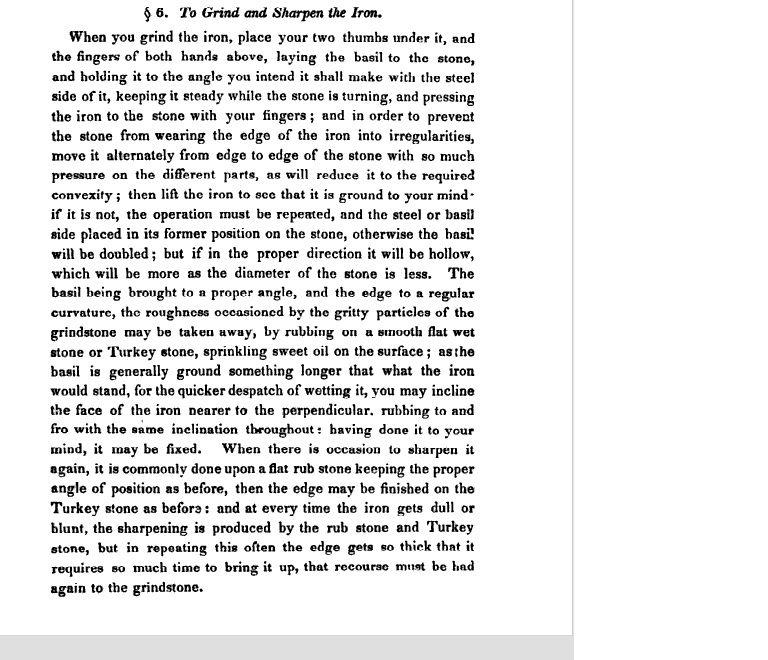To Sharpen the iron - Place a few drops of sweet oil on the oilstone, and
grasping the iron firmly in the right hand, with the palm downwards, apply it to
the stone at an angle about halfway between that of the grinding basil and the
pitch of the iron when in the plane. Rub it to and fro nearly the length of the
stone, pressing the edge firmly down with the fingers of the left hand. Endeavour
to keep the top end of the iron moving in a line parallel with the face of [the]
stone, which will produce a flat bevel. An undulating motion must be avoided,
as this will produce a "round edge", necessitating frequent regrinding. After
rubbing the back for a couple of minutes, turn it over with the face held
quite flat on the stone, and give it a slight rub to remove the wire edge. Take care not
to put any bevel upon this side. Wipe off the oil with shavings and buff the edge
by drawing it across the palm of the left hand in backwards strokes, turning the
left hand over on each side of the iron. Examine the edge; when held to the
light it should be invisible, or it may be tested by gently applying the ball
of the thumb in a sliding motion across the edge, when if sharp, it will be felt
to grip the skin.








